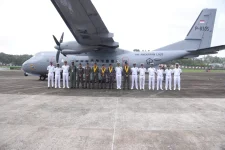- Views: 4K
- Replies: 13
India's air defence capabilities are poised for a substantial enhancement with the anticipated arrival of the fourth regiment of the Russian-origin S-400 Triumf air defence missile system. Sources indicate this delivery is expected in the final quarter of 2025, while the fifth and concluding regiment is slated for August 2026.
These deliveries will mark the completion of a significant $5.43 billion (approximately ₹35,000 crore) agreement inked with Russia in October 2018 for a total of five S-400 regiments.
The acquisition highlights India's strategic efforts to bolster its air defences against potential aerial threats from both Pakistan and China, even as the delivery timeline has been adjusted due to the Russia-Ukraine conflict.
The S-400 Triumf, also identified by NATO as the SA-21 Growler, is a sophisticated mobile, long-range surface-to-air missile (SAM) system engineered by Russia's Almaz-Antey corporation.
Renowned for its advanced capabilities, the S-400 can engage a wide array of aerial targets including fighter aircraft, ballistic and cruise missiles, and unmanned aerial vehicles (drones) at distances up to 400 kilometres and altitudes reaching 30 kilometres.
A key feature of the system is its ability to track as many as 80 targets at once. Each regiment typically comprises two batteries, each equipped with four missile launchers. These are supported by advanced radar systems, such as the 91N6E Big Bird for surveillance and the 92N6E Grave Stone for engagement, along with a 55K6E command and control module.
The system's strength lies in its layered defence approach, employing various missile types: the 40N6E (400 km range), the 48N6E3 (250 km range), and the 9M96E/E2 missiles for shorter ranges (40-120 km).
India’s decision to acquire the S-400 system, finalised in 2018, is aimed at reinforcing its air defence shield along its western frontier with Pakistan and its northern and eastern borders with China.
The system's effectiveness was reportedly demonstrated during "Operation Sindoor", where it successfully intercepted hostile drones and missiles targeting areas in northern and western India.
The three S-400 regiments already operational have been strategically deployed in Punjab, Rajasthan, and the strategically vital Siliguri Corridor. One squadron is specifically tasked with protecting Siliguri Corridor's narrow passage that connects India to its northeastern states, underscoring its importance in national security.
The delivery timetable for the S-400 systems has experienced setbacks primarily due to the ongoing Russia-Ukraine war. This conflict has impacted Russia's defence production and supply chains, leading to a prioritisation of its domestic military requirements. The original schedule, which aimed for all deliveries to be completed by early 2024, was consequently revised.
Defence Ministry sources confirmed to India Today that the fourth regiment is now anticipated by the fourth quarter of 2025, and the fifth by August 2026. In October 2024, Air Chief Marshal Amar Preet Singh had conveyed that deliveries were set to recommence in 2025, affirming Russia's commitment to fulfilling the revised schedule despite the prevailing logistical difficulties.
The first S-400 regiment, received in December 2021, was deployed in the Punjab sector to counter potential threats from Pakistan. The second regiment arrived in 2022 and was stationed in Rajasthan, further strengthening the air defence posture on the western front. The third regiment, delivered in 2023, has been deployed in the eastern sector, likely to cover areas along the Line of Actual Control (LAC) with China.
The upcoming fourth regiment, expected by late 2025, is likely to be deployed to reinforce defences along the China border, possibly in Arunachal Pradesh or Sikkim. The arrival of the fifth regiment in August 2026 will complete India’s S-400 network, providing comprehensive air defence coverage.
The combat capabilities of the S-400 system were notably highlighted during "Operation Sindoor." This operation was initiated following a terror attack in Kashmir on April 22, 2025, which was attributed to elements backed by Pakistan.
On May 7, 2025, the S-400 system successfully neutralized a volley of Pakistani drones and missiles aimed at Indian military installations in Awantipora, Srinagar, Jammu, Pathankot, and Bhuj, thereby averting considerable damage.
The S-400 is integrated into the Indian Air Force’s Integrated Air Command and Control System (IACCS), a network that amalgamates various aerial surveillance and response assets. This integration, coupled with the S-400's ability to detect threats from as far as 600 kilometres and engage multiple targets simultaneously, has established it as a critical component of India’s air defence strategy.
The impressive performance of the S-400 has reportedly led to internal discussions regarding the potential procurement of additional units, as reported by India Today on May 13, 2025. This consideration comes in light of Pakistan's deployment of Turkish-made drones and Chinese-supplied air defence systems like the HQ-9, as well as China's stationing of advanced aircraft and missiles along the LAC.
The S-400 system is seen as a vital deterrent. Its deployment in the sensitive Siliguri Corridor, a narrow stretch of land vulnerable to potential aggression, is particularly crucial for protecting against aerial and missile threats in the region.


